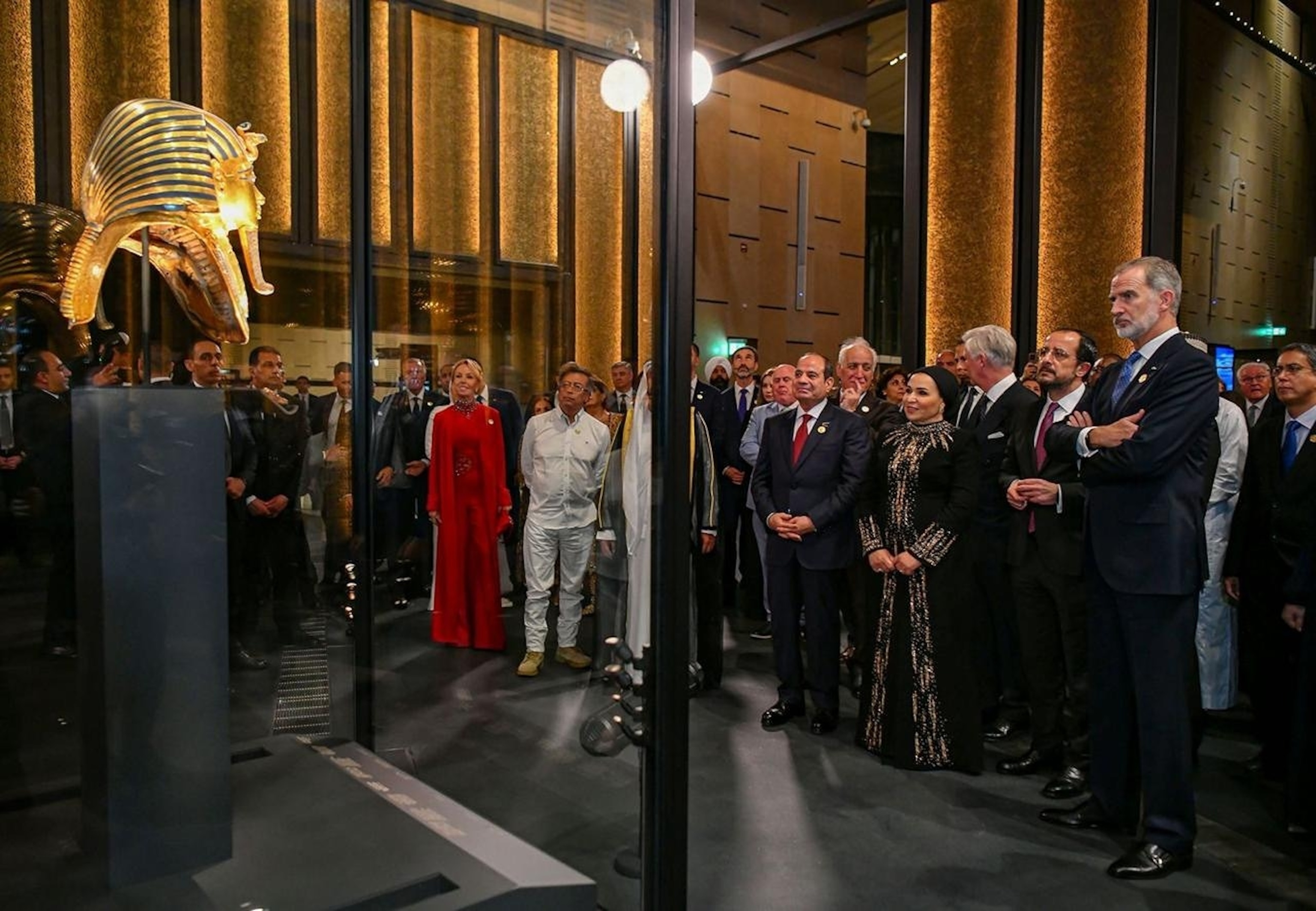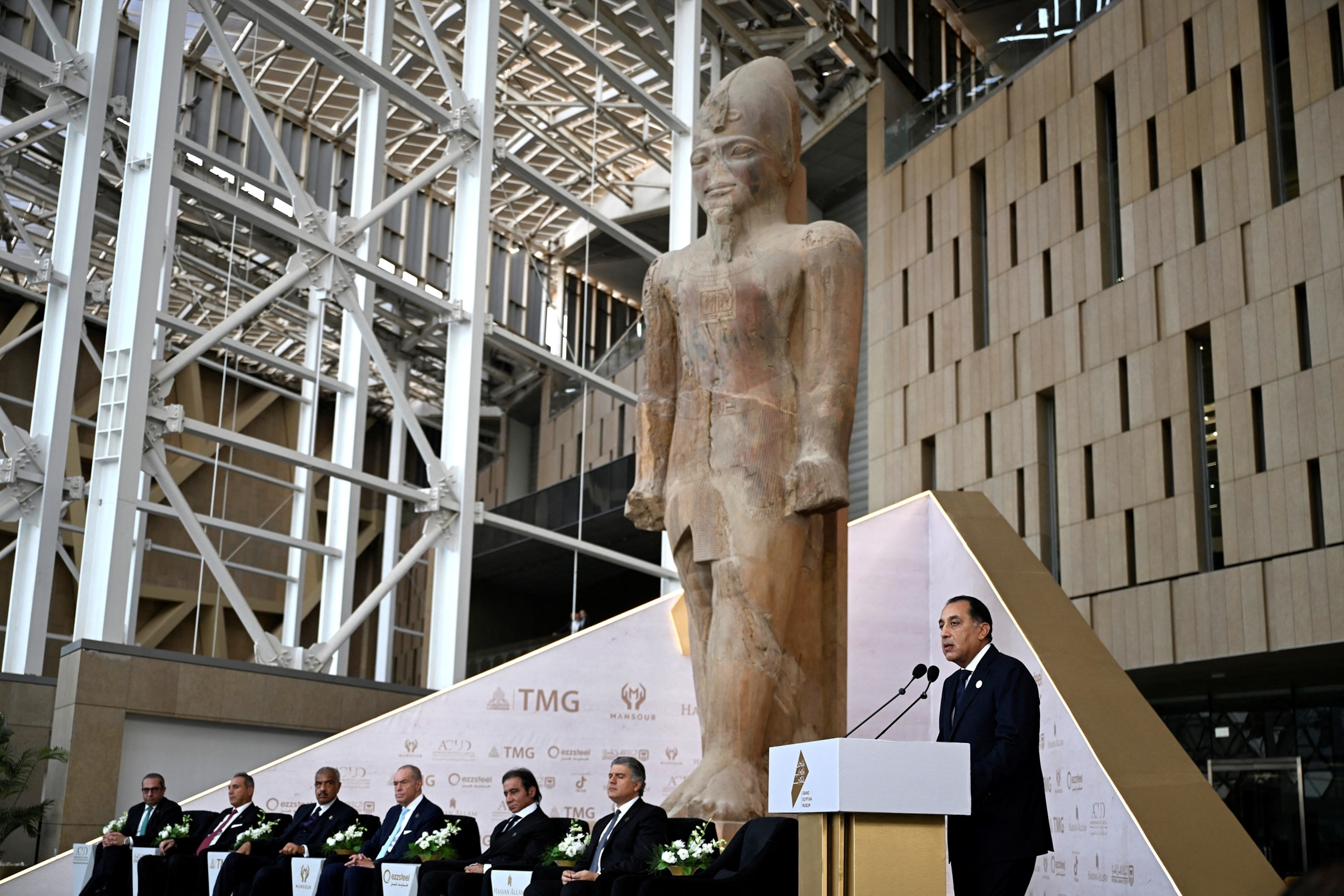After decades of anticipation and multiple delays, the Grand Egyptian Museum has finally opened its doors in a ceremony as grand as its name. The $1 billion megaproject, more than 20 years in the making, is the world’s largest museum dedicated to a single civilization, ancient Egypt. With over 100,000 artefacts, including the full collection of Tutankhamun’s treasures, the museum redefines how Egypt’s cultural heritage is experienced by the world.
The Grand Egyptian Museum sits at the edge of the Giza Plateau, just two kilometers from the iconic pyramids. Its design, by Heneghan Peng Architects, was conceived to mirror the geometry of the pyramids, giving visitors a seamless dialogue between past and present. Its façade of limestone and glass glows like the desert horizon, and the museum’s scale, over 500,000 square meters, matches the monumental ambition of preserving Egypt’s legacy for generations to come.
A Celebration Fit for the Ages
The grand inauguration was nothing short of a historic spectacle. Held beneath the shadow of the pyramids, the ceremony drew presidents, royals, and cultural icons from more than 80 countries. Fireworks lit up the Giza sky, while laser projections and drones created luminous depictions of Egypt’s gods and pharaohs. Egyptian soprano Fatma Said performed alongside international orchestras, uniting music and heritage in a message of peace and coexistence.
President Abdel Fattah El-Sisi, in his address, said: “Peace is the only path to building civilisations, knowledge flourishes only in an atmosphere of security and stability, and culture bears fruit only when nurtured in an environment of coexistence and understanding.” His words resonated across a ceremony that showcased Egypt not just as the cradle of civilization but as a global beacon of culture, stability, and renewal.
Inside the Grand Egyptian Museum: A Journey Through 7,000 Years

Stepping inside the museum is like walking through time. Visitors are greeted by an 11-meter-tall, 3,200-year-old statue of Ramses II, standing guard over the main atrium. From there, the Grand Staircase—lined with 60 colossal statues—ascends toward a panoramic view of the pyramids. Each of the 12 main galleries tells a chapter in Egypt’s story, from the prehistoric era to the Greco-Roman period.
At the heart of it all lies the long-awaited Tutankhamun Gallery, displaying for the first time all 5,900 items discovered in the boy king’s tomb. The collection includes his gilded chariot, throne, and iconic golden mask—presented not as relics but as parts of a living narrative that follows his reign and legacy. This reimagined exhibition utilizes cutting-edge technology, including augmented reality and digital storytelling, to immerse visitors in the world of ancient Egypt.
A Global Collaboration and a Triumph of Perseverance

The Grand Egyptian Museum has been an odyssey of vision, patience, and international cooperation. First announced in 1992 and with its foundation stone laid in 2002, the project weathered revolutions, financial crises, and even a global pandemic. The Japan International Cooperation Agency played a key role, contributing nearly $800 million in loans and technical expertise.
Its completion is an architectural feat and a statement of Egypt’s resilience and determination to safeguard its cultural treasures. The Middle East’s largest restoration center, located within the museum, continues to preserve artefacts not only from Egypt but from across the region, further cementing the country’s leadership in cultural conservation.
Architectural Harmony Between Past and Future

The museum’s design itself is a masterpiece. Architect Roisin Heneghan explains that every line and angle of the structure aligns with the three pyramids of Giza. The roof rises toward the same slope as the Great Pyramid, and the triangular motifs across the façade echo Egypt’s most enduring symbol. This architectural harmony reflects how the Grand Egyptian Museum functions not only as a museum but also as an extension of the landscape—a “fourth pyramid” in spirit.
Every gallery and corridor has been designed to flood with natural light, casting shadows that change through the day, mimicking the sun’s journey over the desert. The result is a building that feels alive—constantly shifting, yet eternal.
Boosting Tourism and Egypt’s Global Standing

Beyond its cultural mission, the Grand Egyptian Museum is a cornerstone of Egypt’s economic vision. Already, over two million visitors have entered since its partial openings began, with projections estimating up to five million annual visitors after the full launch. The museum is expected to drive Egypt toward its goal of attracting 30 million tourists per year by 2030, reinforcing the country’s position as a top global destination.
By blending heritage and innovation, Egypt has transformed its most ancient symbols into a modern engine of cultural diplomacy and economic growth. As museum director Ahmed Ghoneim put it, “What sets this apart is not just the full collection, but how it is presented—as a narrative of the king’s life and reign, not as standalone objects, and without visual clutter.”
A New Chapter in Egypt’s Story
The opening of the Grand Egyptian Museum marks a turning point in the world’s relationship with Egypt’s history. For over a century, much of the country’s heritage was scattered across institutions around the globe. Now, in a single monumental space, Egypt reclaims its narrative—telling its own story, in its own voice, with pride and precision.
As the light shows fade and the world’s dignitaries return home, the GEM stands as a timeless monument—one that bridges 7,000 years of civilization with the digital age. It is not just a museum, but a living testament to the enduring power of human creativity, faith, and wonder.
Featured image: Khaled Desouki/Getty Images
—Read Also
